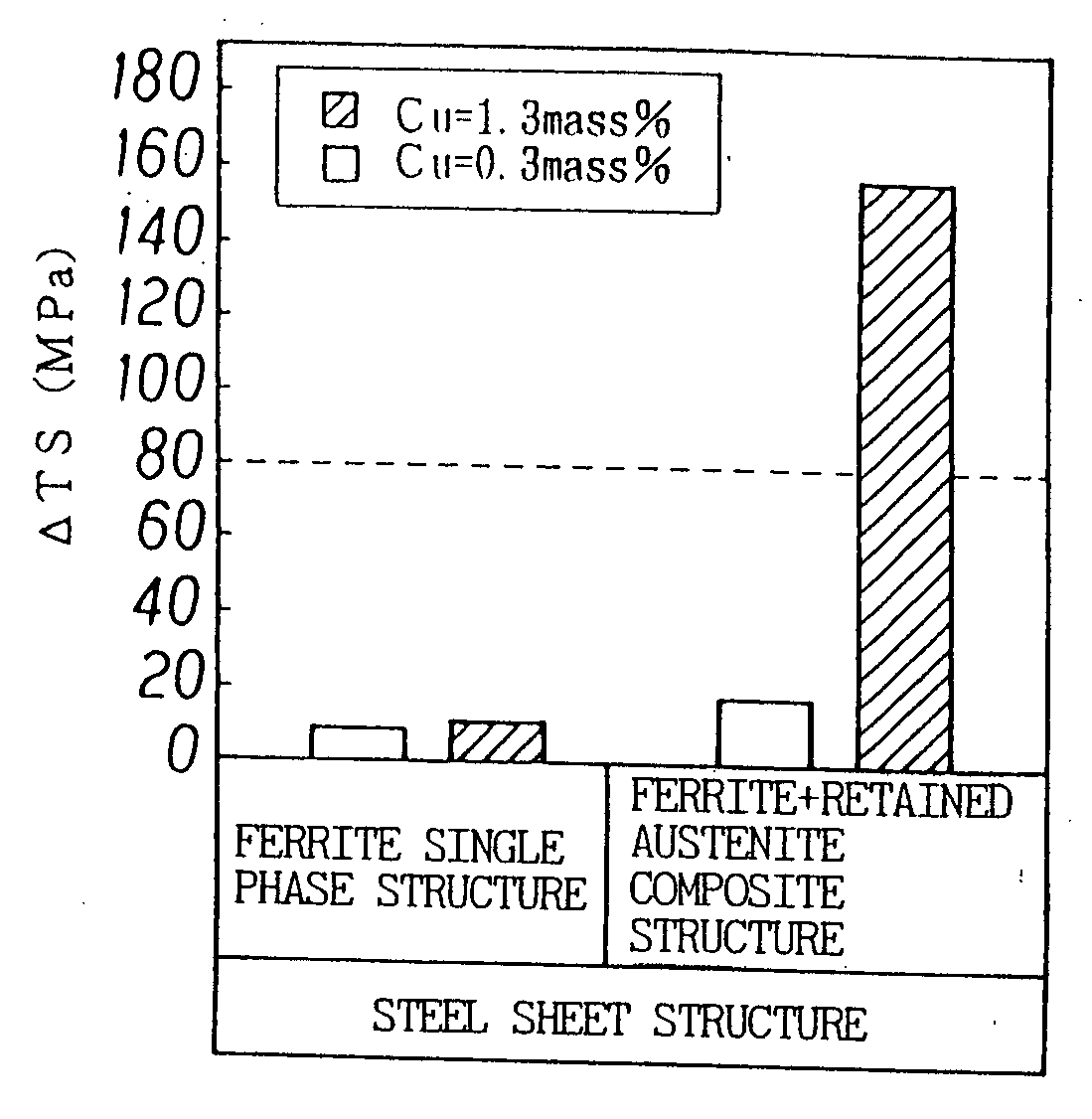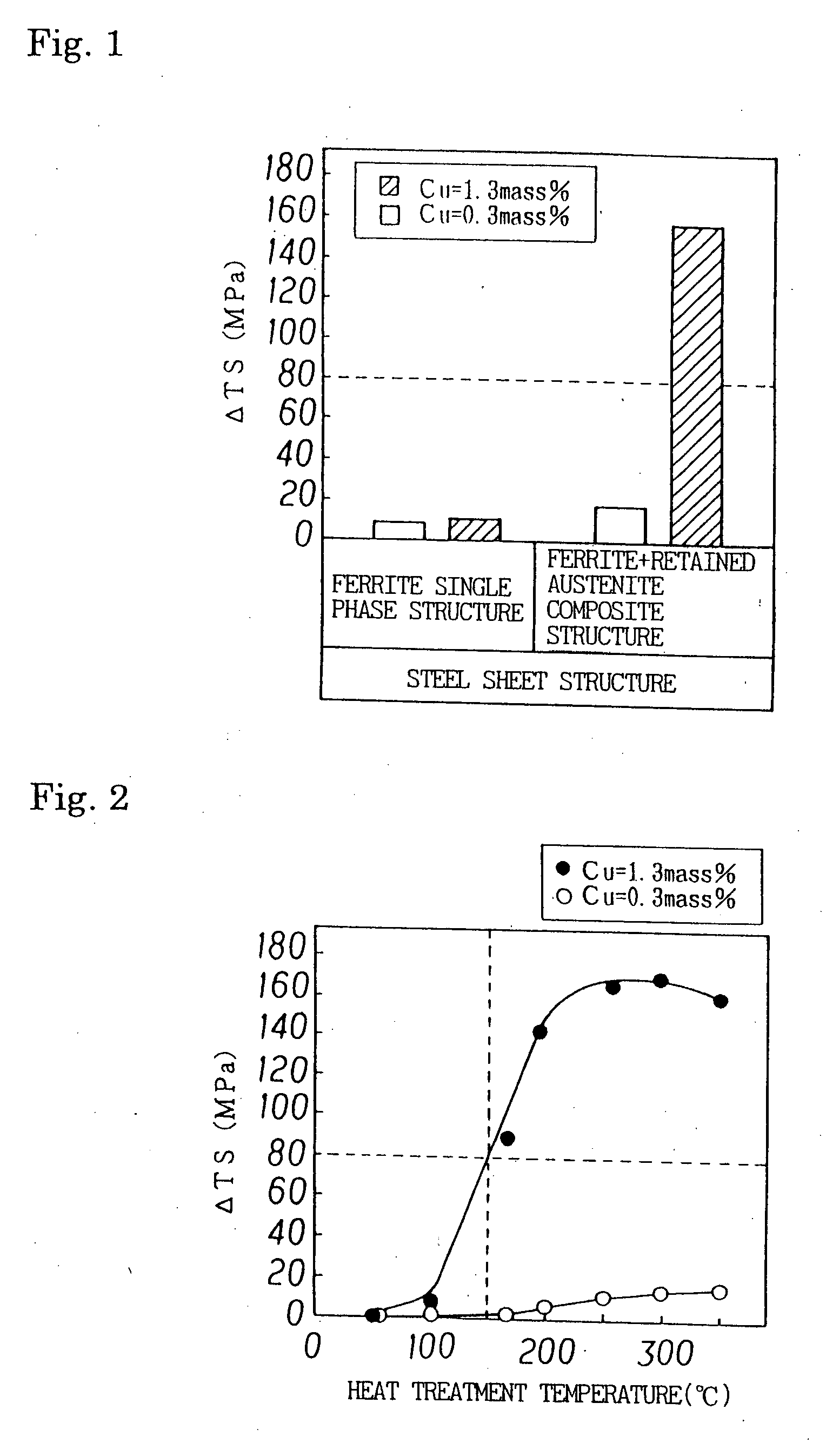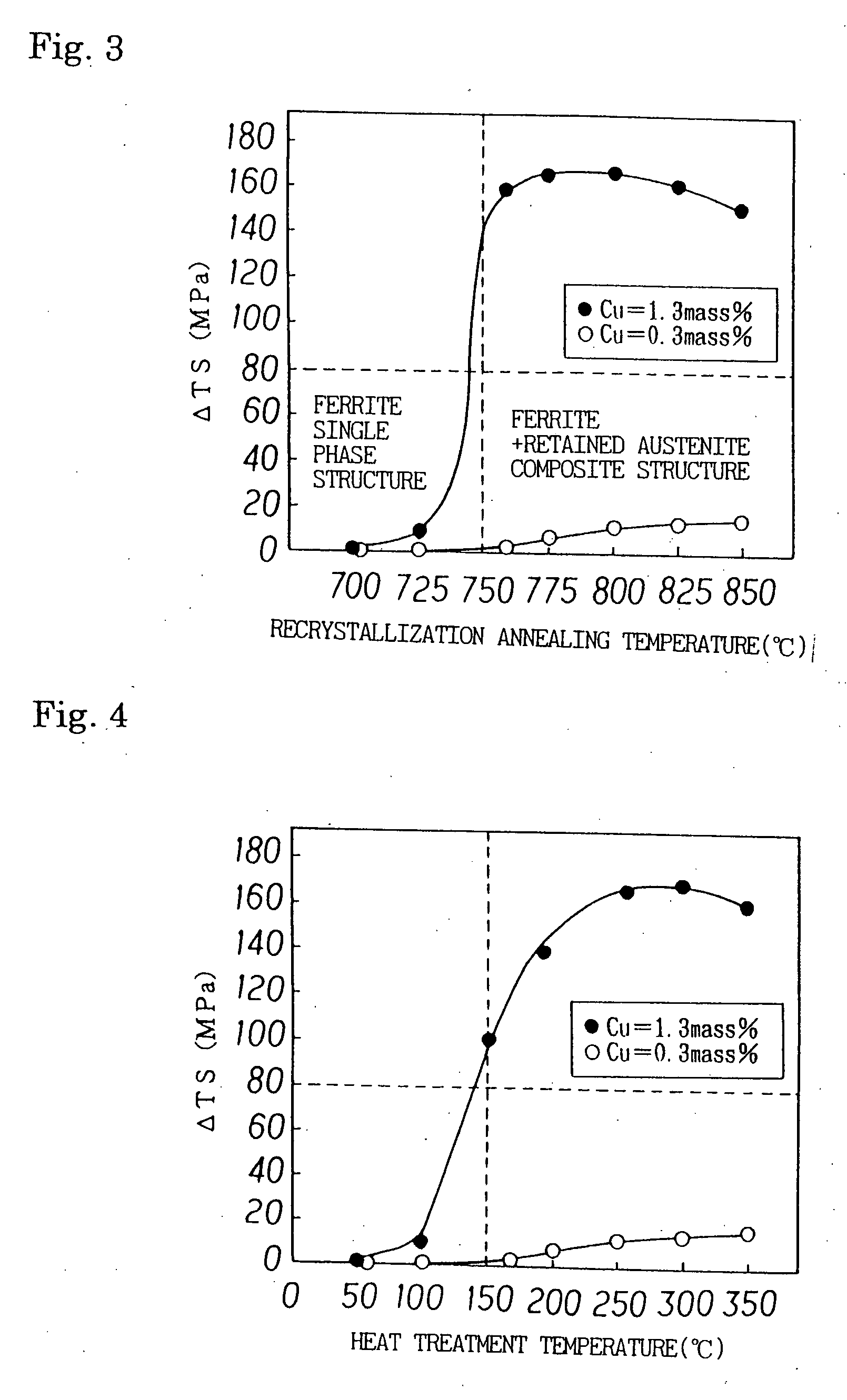High-ductility steel sheet excellent in press formability and strain age hardenability, and method for manufacturing the same
a high-ductility steel and press formability technology, applied in the field of automobile steel sheets, can solve the problems of poor press formability, ductility and a lower hole-expanding ratio, and weight reduction in automobile bodies has become a very important factor, and achieve excellent press formability, excellent strain age hardenability, and improved tensile strength.
- Summary
- Abstract
- Description
- Claims
- Application Information
AI Technical Summary
Benefits of technology
Problems solved by technology
Method used
Image
Examples
example 1
Molten steels having the compositions shown in Table 1 were made in a converter and cast into steel slabs by a continuous casting process. Each of these steel slabs was reheated, and hot-rolled under conditions shown in Table 2 into a hot-rolled steel strip (hot-rolled sheet) having a thickness of 2.0 mm. The hot-rolled sheet was temper-rolled at a reduction of 1.0%.
TABLE 1STEELCOMPOSITION (wt. %)NO.CSiMnPSAlNA0.091.451.050.010.0030.0340.002B0.121.501.200.010.0020.0300.002C0.101.481.350.010.0020.0280.002D0.151.531.450.010.0030.0330.002E0.121.481.550.010.0050.0320.002F0.111.501.080.010.0040.0320.002G0.131.521.220.010.0040.0300.002H0.121.421.220.010.0030.0330.002I0.111.521.520.010.0030.0310.002J0.131.431.480.010.0030.0280.002K0.151.581.050.010.0030.0300.002L0.141.601.210.010.0030.0280.002STEELCOMPOSITIONNO.CuNiCr, Mo,Nb, Ti, VA1.52———B1.430.65Mo: 0.32—C1.250.52Cr: 0.53—D1.330.44—Nb: 0.01,Ti: 0.01,V: 0.01E0.15———F0.68———G0.98———H1.550.62——I1.49—Cr: 0.15,—Mo: 0.12J1.43—Mo: 0.21—K1.52...
example 2
Molten steels having the compositions shown in Table 4 were made in a converter and cast into steel slabs by a continuous casting process. Each of these steel slabs were reheated, and hot-rolled under conditions shown in Table 5 into a hot-rolled steel strip (hot-rolled sheet) having a thickness of 2.0 mm. The hot-rolled steel strip was temper-rolled at a reduction of 1.0%.
TABLE 1STEELCOMPOSITION (wt. %)NO.CSiMnPSAlNA0.091.451.050.010.0030.0340.002B0.121.501.200.010.0020.0300.002C0.101.481.350.010.0020.0280.002D0.151.531.450.010.0030.0330.002E0.121.481.550.010.0050.0320.002F0.111.501.080.010.0040.0320.002G0.131.521.220.010.0040.0300.002H0.121.421.220.010.0030.0330.002I0.111.521.520.010.0030.0310.002J0.131.431.480.010.0030.0280.002K0.151.581.050.010.0030.0300.002L0.141.601.210.010.0030.0280.002A0.091.451.050.010.0030.0340.002B0.121.501.200.010.0020.0300.002C0.101.481.350.010.0020.0280.002D0.151.531.450.010.0030.0330.002E0.121.481.550.010.0050.0320.002F0.111.501.080.010.0040.0320.0...
example 3
Molten steels having the composition shown in Table 7 were made in a converter and cast into steel slabs by a continuous casting process. Then, each of these steel slabs was reheated to 1,250° C., and hot-rolled in a hot rolling step of hot rolling at a finish rolling end temperature of 900° C. and a coiling temperature of 600° C. into a hot-rolled steel strip (hot-rolled sheet) having a thickness of 4.0 mm. Then, the hot-rolled steel strip (hot-rolled sheet) was subjected to a cold rolling step of pickling and cold-rolling into cold rolled steel strip (cold-rolled sheet) having a thickness of 1.2 mm. Thereafter, the cold-rolled steel strip (cold-rolled sheet) was subjected to recrystallization annealing step comprising heating and soaking treatment and a subsequent retaining treatment under the conditions shown in Table 8 on the continuous annealing line to obtain cold-rolled annealed sheet. The resultant steel strip (cold-rolled annealed sheet) was further temper-rolled at an red...
PUM
| Property | Measurement | Unit |
|---|---|---|
| temperature | aaaaa | aaaaa |
| temperature | aaaaa | aaaaa |
| temperature | aaaaa | aaaaa |
Abstract
Description
Claims
Application Information
 Login to View More
Login to View More - R&D
- Intellectual Property
- Life Sciences
- Materials
- Tech Scout
- Unparalleled Data Quality
- Higher Quality Content
- 60% Fewer Hallucinations
Browse by: Latest US Patents, China's latest patents, Technical Efficacy Thesaurus, Application Domain, Technology Topic, Popular Technical Reports.
© 2025 PatSnap. All rights reserved.Legal|Privacy policy|Modern Slavery Act Transparency Statement|Sitemap|About US| Contact US: help@patsnap.com



